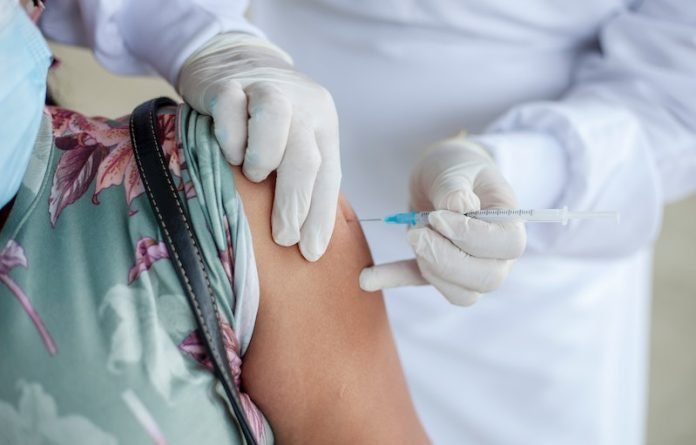
Yes, you can get the influenza vaccine and the COVID-19 vaccine or booster at the same time, and actually, I recommend doing exactly that.
You might as well get them out of the way.
Getting both vaccines at once does not decrease the efficacy of either and does not cause any changes to either vaccine. However, because you’re getting two vaccines at once, you may feel a little crummy for the next few days.
No, that doesn’t mean the vaccine made you sick or that your body is going to have a problem with the vaccine. It just means your body is gaining immunity and using a lot of energy to create antibodies.
This advice is different than what the recommendation used to be when the COVID vaccine first came out.
When the COVID shot was new, experts wanted to monitor what was happening as the vaccines were delivered, so the previous recommendation was to separate the COVID vaccine and flu vaccine to make sure there were no side effects.
But we have a lot more information now, and a lot of people have gotten both vaccines at once, so we know they’re completely safe to receive together.
I recommend getting the flu shot as soon as it is available.
It’s best to get the flu vaccine before you are exposed to the flu, which usually starts happening when the weather cools, mostly because people are spending more time inside where it’s easy for respiratory viruses to spread.
After getting the flu shot, it takes a few weeks for your body to build up full immunity.
The flu is a tricky virus that mutates every year, which is why there’s a new flu shot every year. The flu vaccine isn’t perfect, and just because you get the shot, doesn’t mean you’ll never get the flu.
It just means you’ll have tools to fight the infection if it comes. If you’re traveling for Thanksgiving or the December holidays or attending big indoor activities, consider getting vaccinated a few weeks beforehand.
Generally, over the last few years, we saw fewer cases of the flu because so many people were taking COVID precautions, like washing hands, wearing masks, and avoiding others while sick.
But as we’ve gone back to our normal daily lives—through which the flu spreads pretty quickly—we have seen an uptick in the flu.
Did you know it’s possible to get the flu and COVID-19 at the same time? The two viruses spread in a similar way and are highly contagious.
The symptoms also are very much the same for mild cases—fever, chills, cough, difficulty breathing, muscle aches, and fatigue.
With COVID, more people have changes in taste and smell, which is not often seen with the flu.
Sometimes, people with the flu experience symptoms quickly after being infected, whereas people with COVID develop symptoms more slowly.
Also, the treatment for the flu and COVID is relatively the same. However, for high-risk patients such as the elderly or people with lung disease, it is worth talking to your primary care doctor about antiviral treatments for COVID.
They are commonly available, are best if taken within the first five days of symptoms, and can significantly decrease the risk of severe disease.
Written by Tuhin Roy.
If you care about COVID, please read studies about a new treatment options for COVID-19, and vitamin D deficiency linked to severe COVID-19 and death.
For more information about COVID, please see recent studies about a universal antibody therapy for all COVID-19 variants, and results showing this new oral drug may prevent death from COVID-19.



